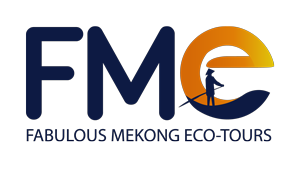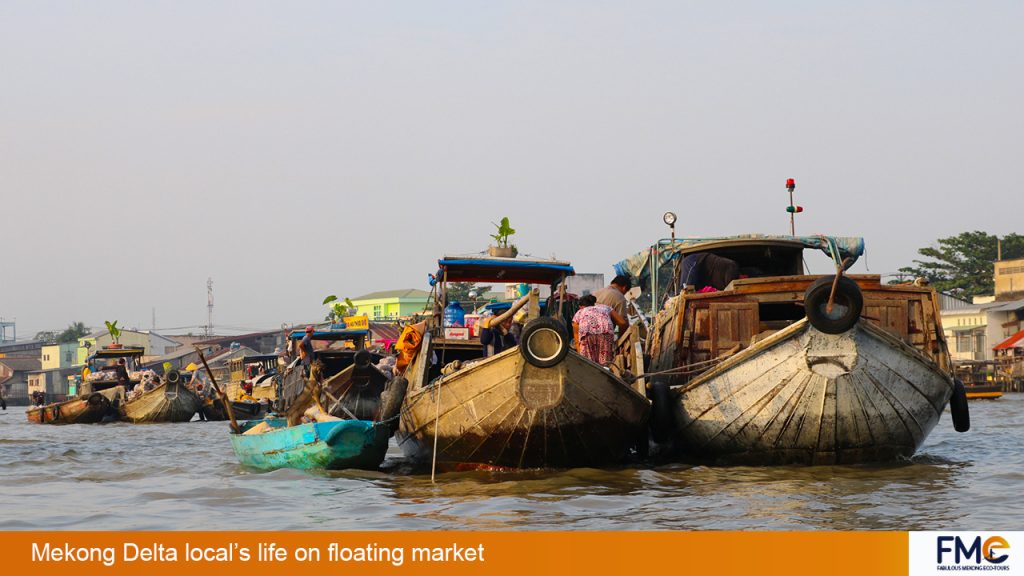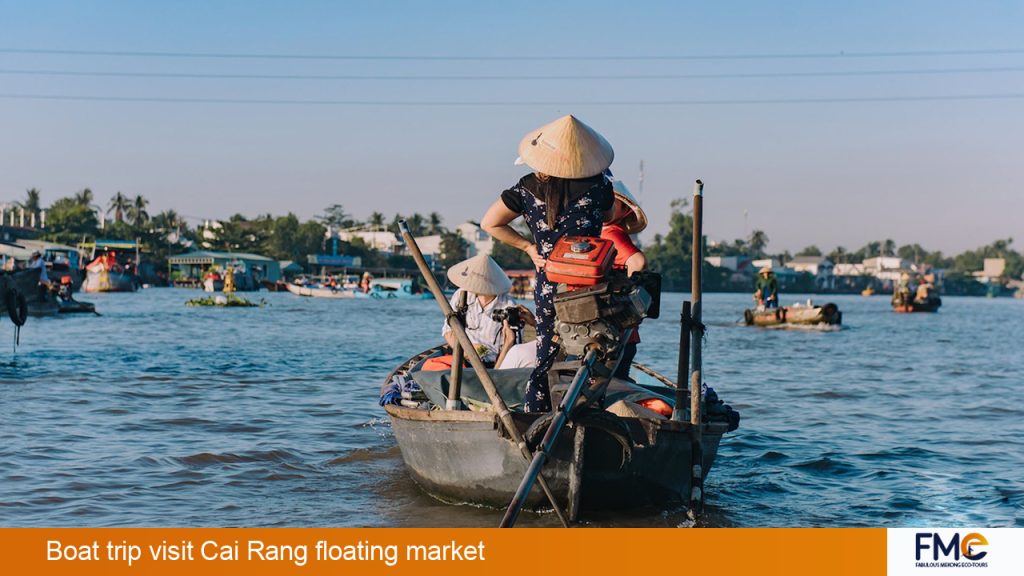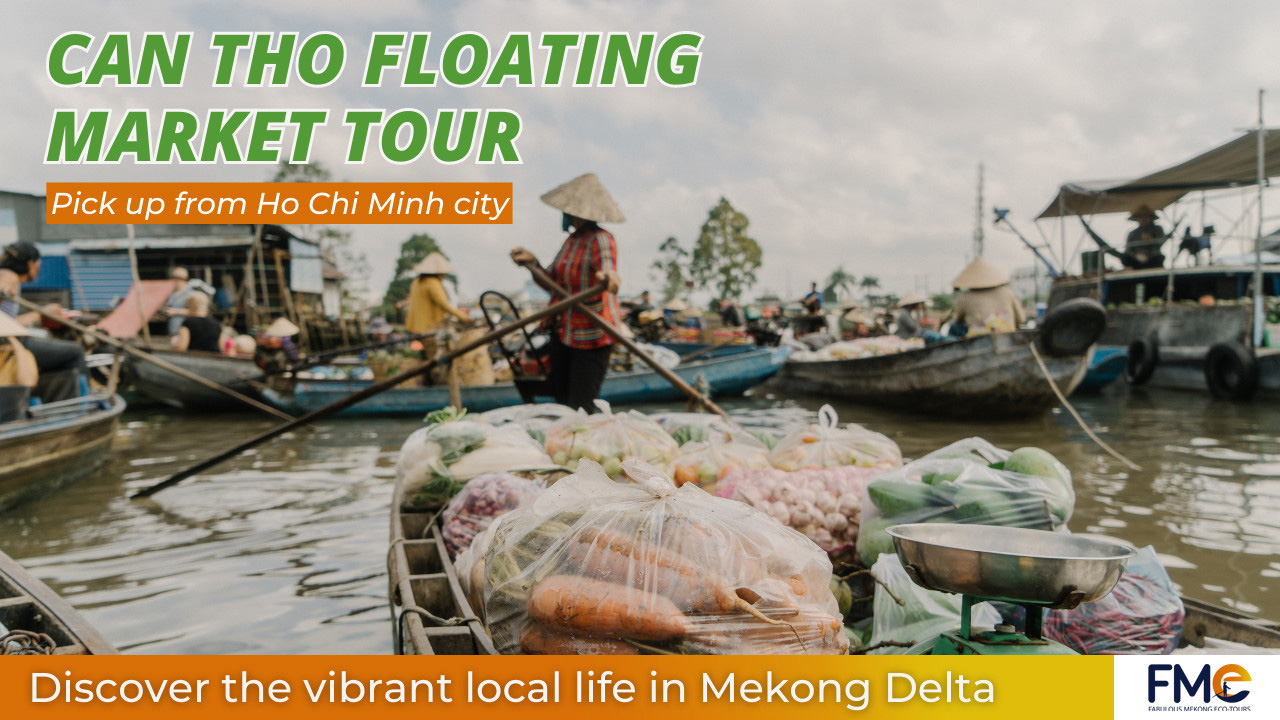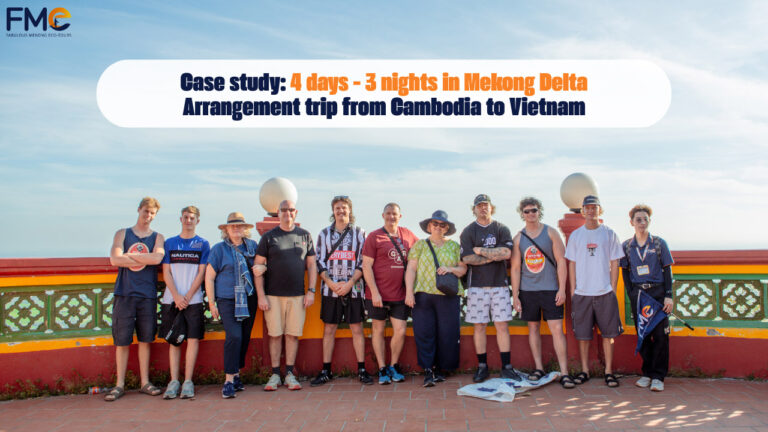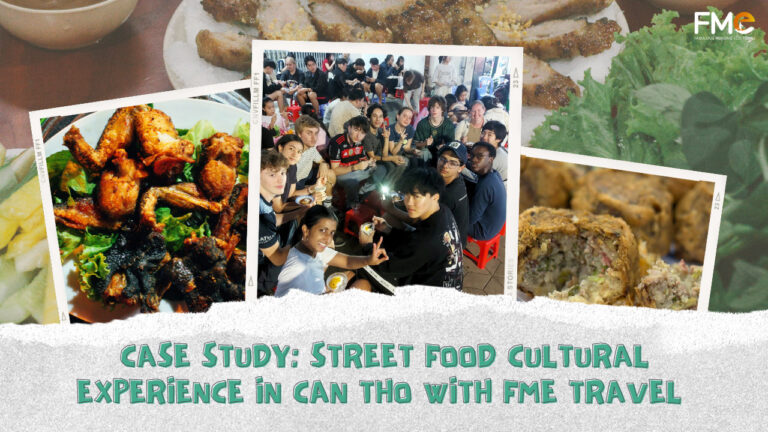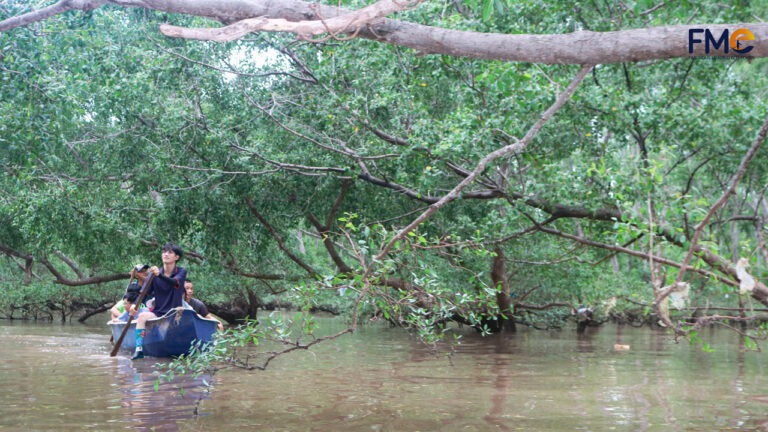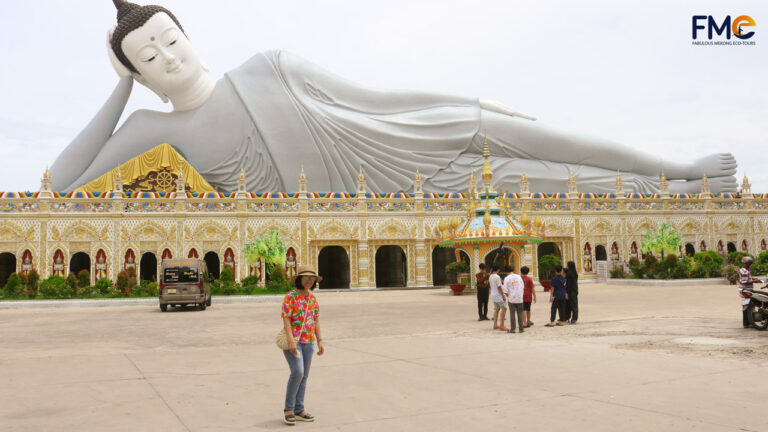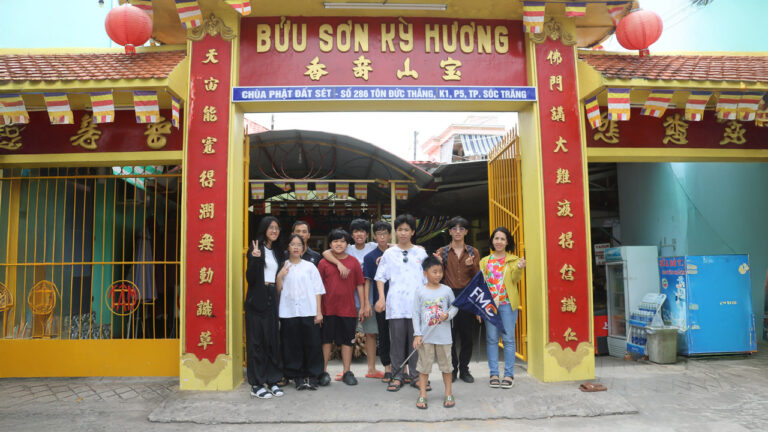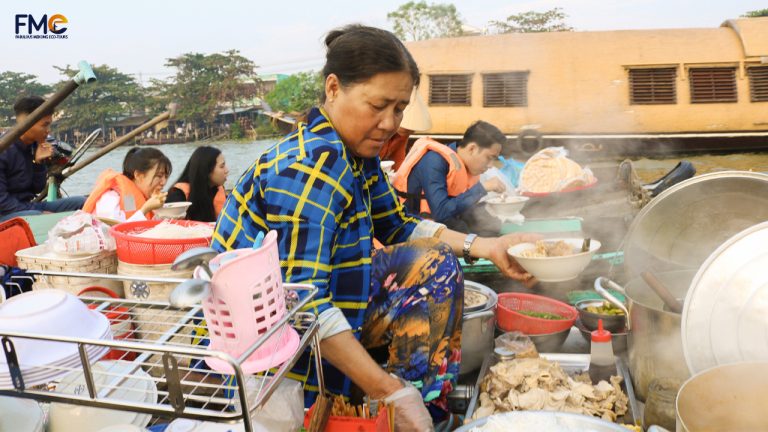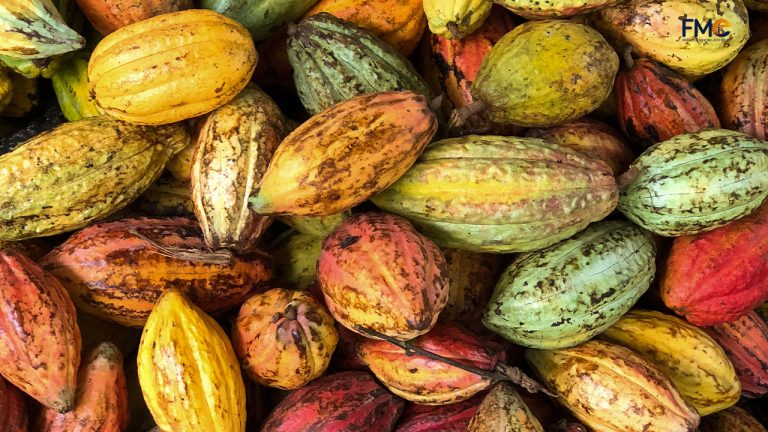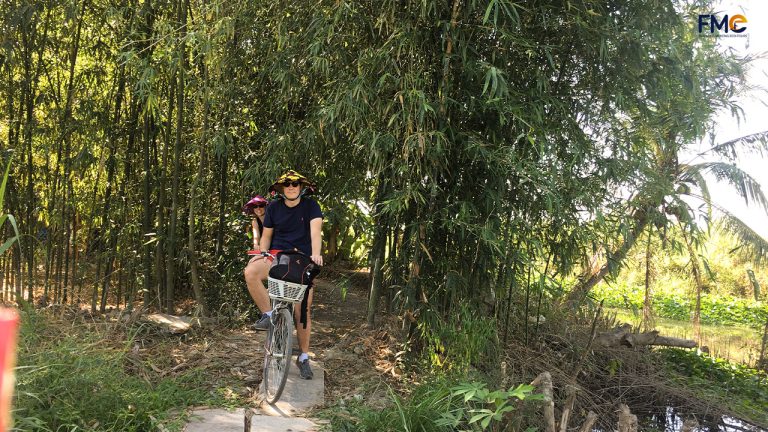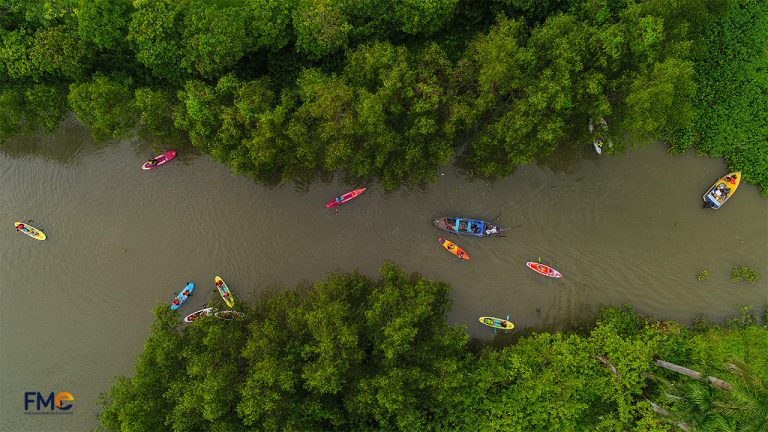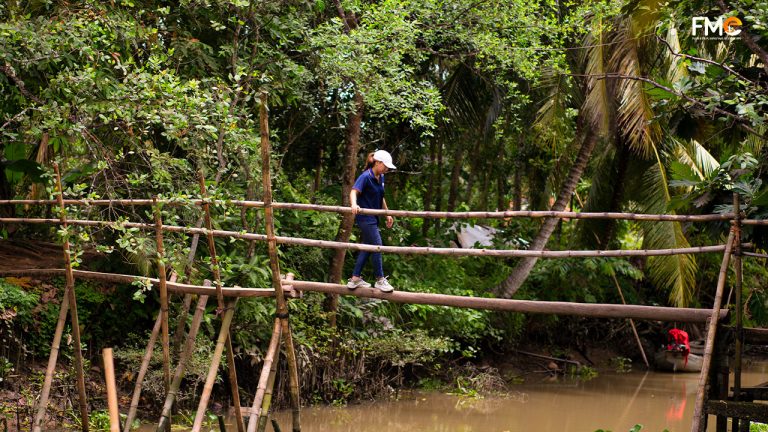Cai Rang Floating Market (Viet Nam) - All You Need to Know
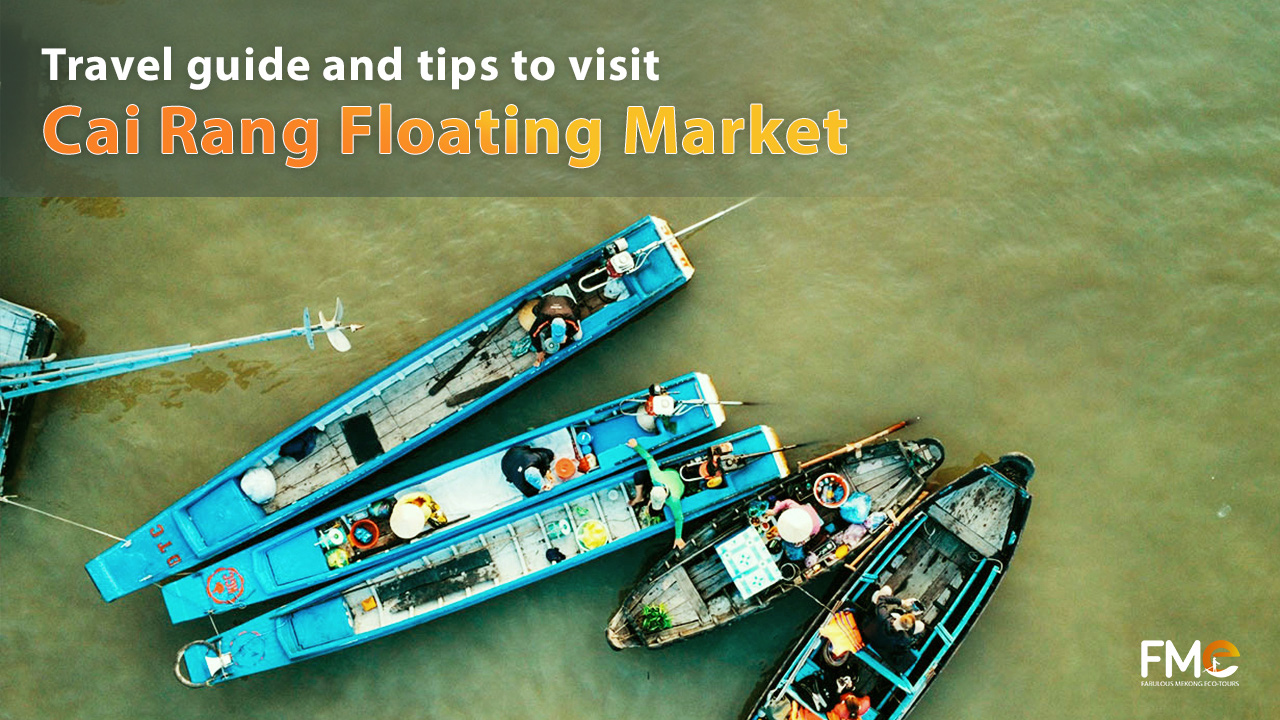
Cai Rang Floating Market is a cultural gem of Can Tho and the entire Mekong Delta. For anyone visiting Southern Vietnam, this market is a must-visit destination. It’s where the lively river life and centuries-old trading culture come alive.
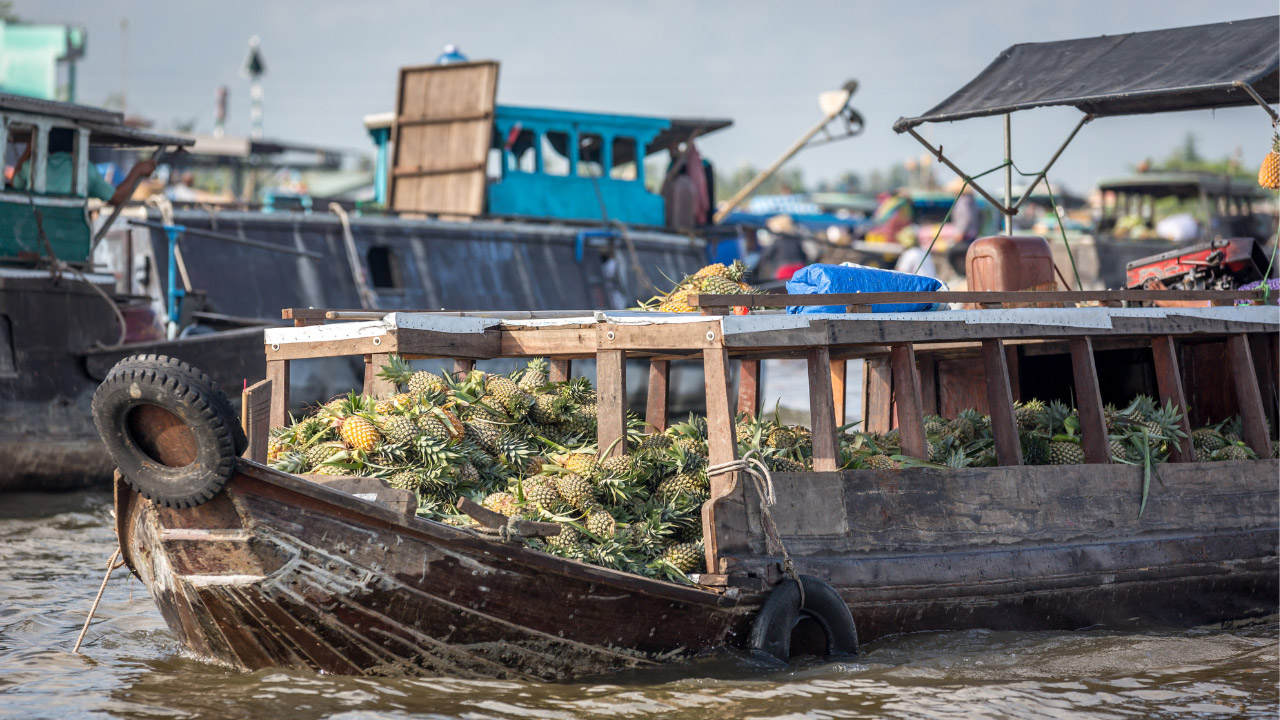
The market buzzes with activity as boats filled with fruits, vegetables, and local goods gather to trade. Families live on these boats, turning them into floating homes. Traders from nearby provinces also arrive two or three times a week, selling their products before heading back to their villages.
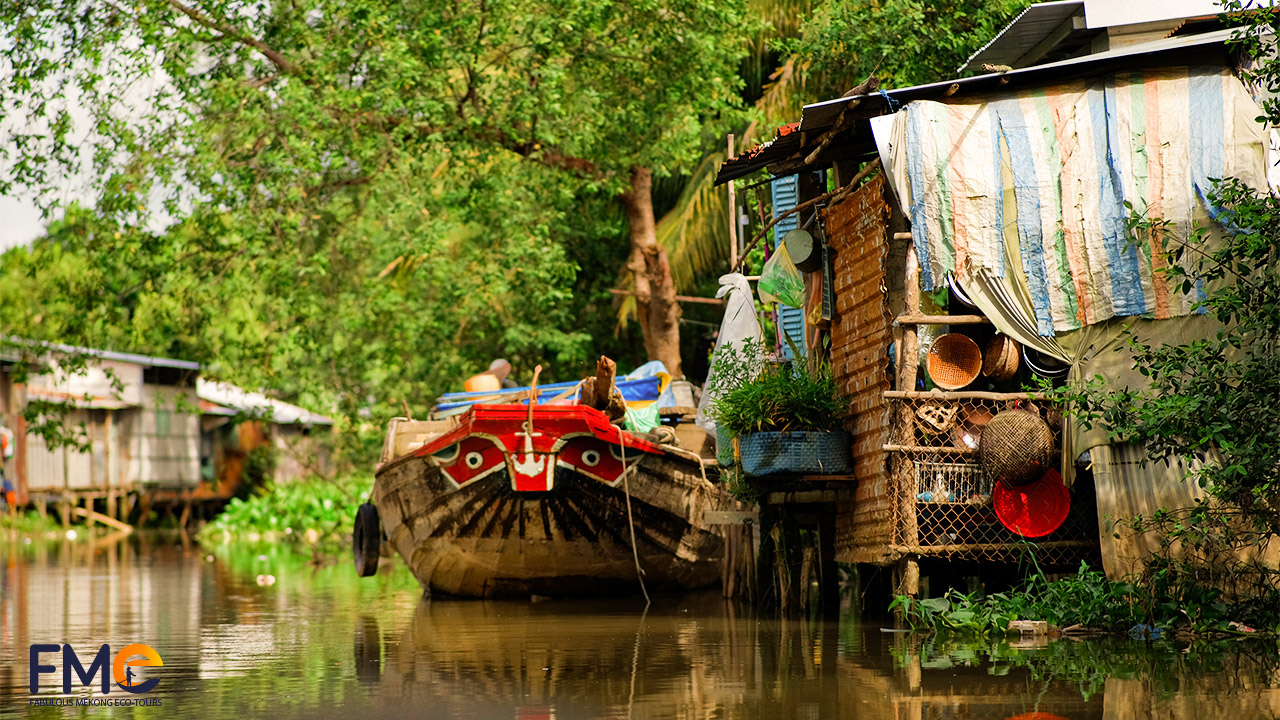
“Seeing the vibrant life on the river was unforgettable. Watching the locals trade and live in harmony with the water made me appreciate a culture so deeply connected to nature.” – John Smith, traveler from Australia.
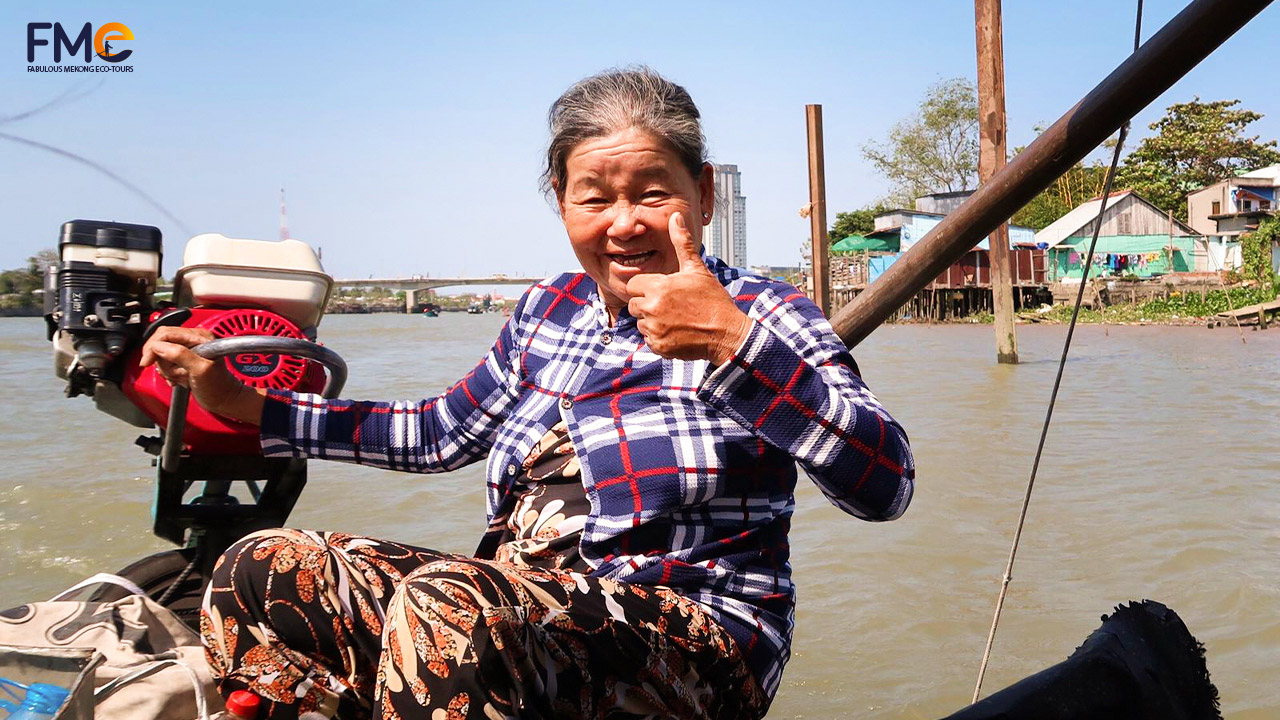
This market is more than a place to shop—it’s a window into the soul of the Mekong Delta, showcasing the resilience and warmth of its people.
Table of Contents
ToggleThe gracefulness of Cai Rang floating market
The Gracefulness of Cai Rang Floating Market
Cai Rang Floating Market offers a window into the vibrant yet serene life of the Mekong Delta. Watching locals skillfully balance on planks between boats or transfer goods with precision is a captivating sight. The river isn’t just a marketplace—it’s a lifeline where culture, commerce, and daily life converge.
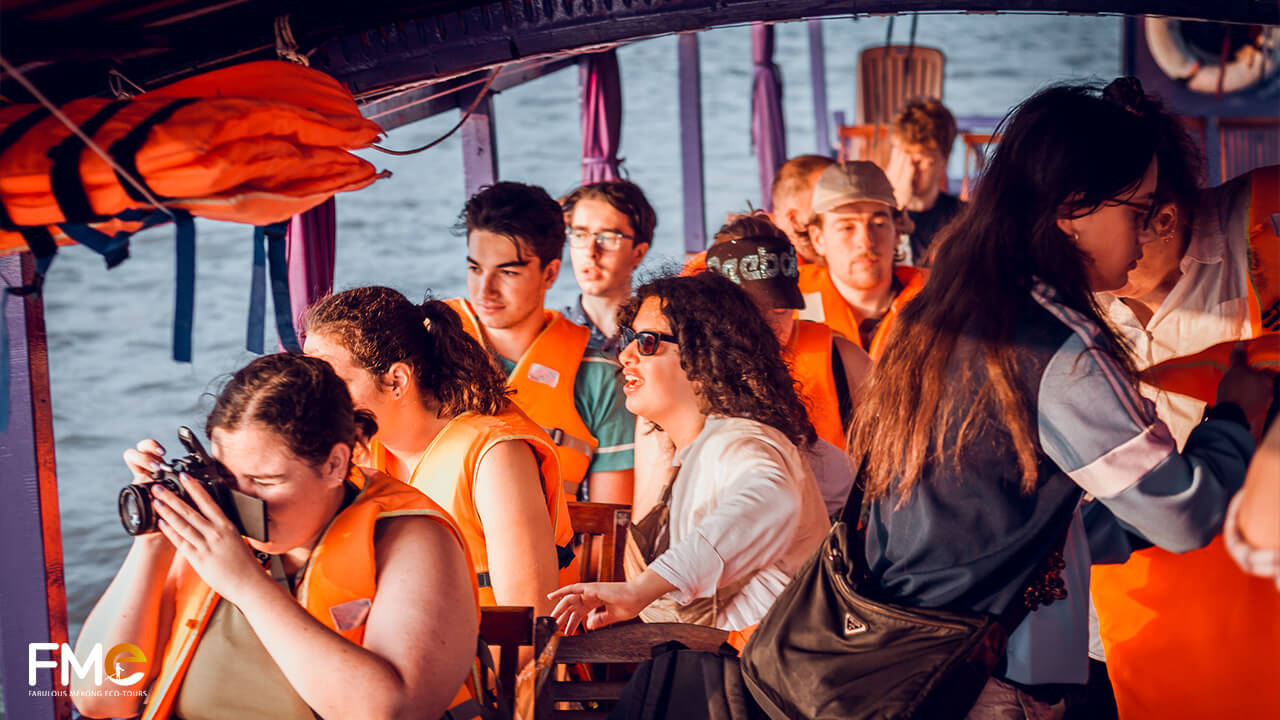
“It was incredible to see how seamlessly the locals navigated their boats and traded with such ease,” said Sarah Thompson, a traveler from the UK. “It felt like stepping back in time, witnessing a way of life that has remained unchanged for generations.”
Despite the challenges of living on boats, locals radiate resilience and joy, evident in their smiles as they go about their day. This floating world reflects a unique harmony between people and nature.
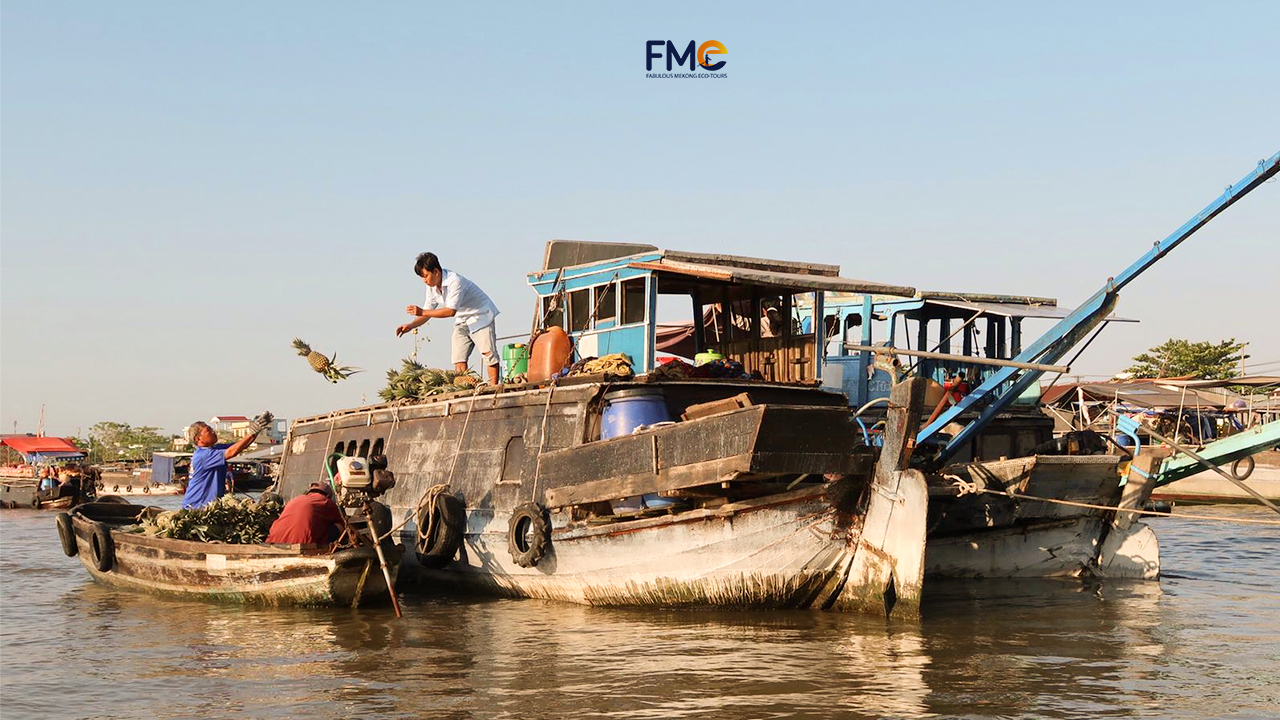
The bustling trading scene
The market buzzes with activity, with boats packed tightly together, forming a floating labyrinth. These boats serve as shops, homes, and sometimes even schools. Traders negotiate and transfer goods in a well-practiced dance of commerce.
“The energy here is unmatched,” shared Michael Lee, a visitor from Singapore. “One moment, I was watching a vendor haggle over a price, and the next, I saw a father teaching his child to steer their boat. It’s a beautiful mix of tradition and modernity.”
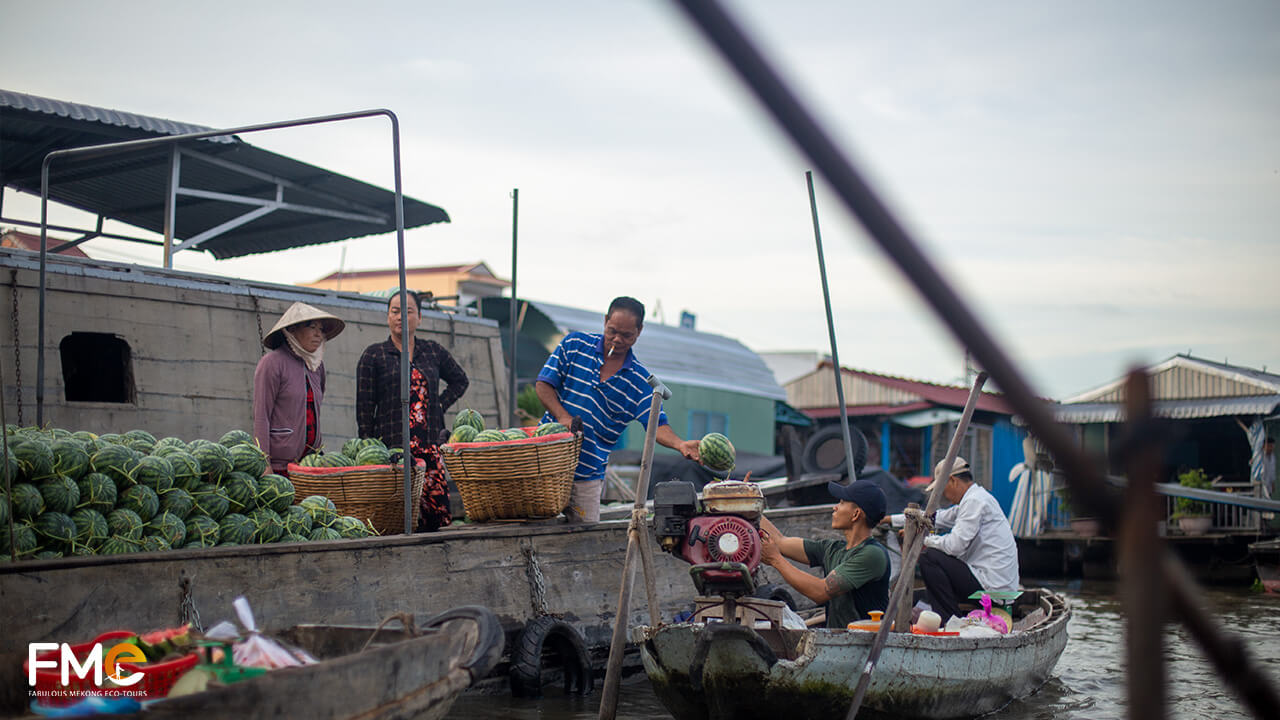
Children accompany their parents, navigating their unique life on the water. While education is a challenge, families make every effort to ferry their children to shore for school, believing in the transformative power of learning.
Breakfast on the boat at Cai Rang floating market
As the sun rises, the aroma of freshly cooked breakfasts fills the air. Floating restaurants serve popular dishes like hu tieu (pork rice noodle soup), bun rieu, and com tam (broken rice), all at an affordable price of around 40,000 VND ($1.50).
“I tried the hu tieu from the ‘noodle queen,’ and it was beyond amazing,” said Mark Jensen, an American food enthusiast. “The flavors were so rich and balanced—it was easily one of the best meals I’ve had in Vietnam.”
Discover Can Tho’s unique local dish: Nem Nuong – Vietnam Pork BBQ ROLLS in Can Tho.
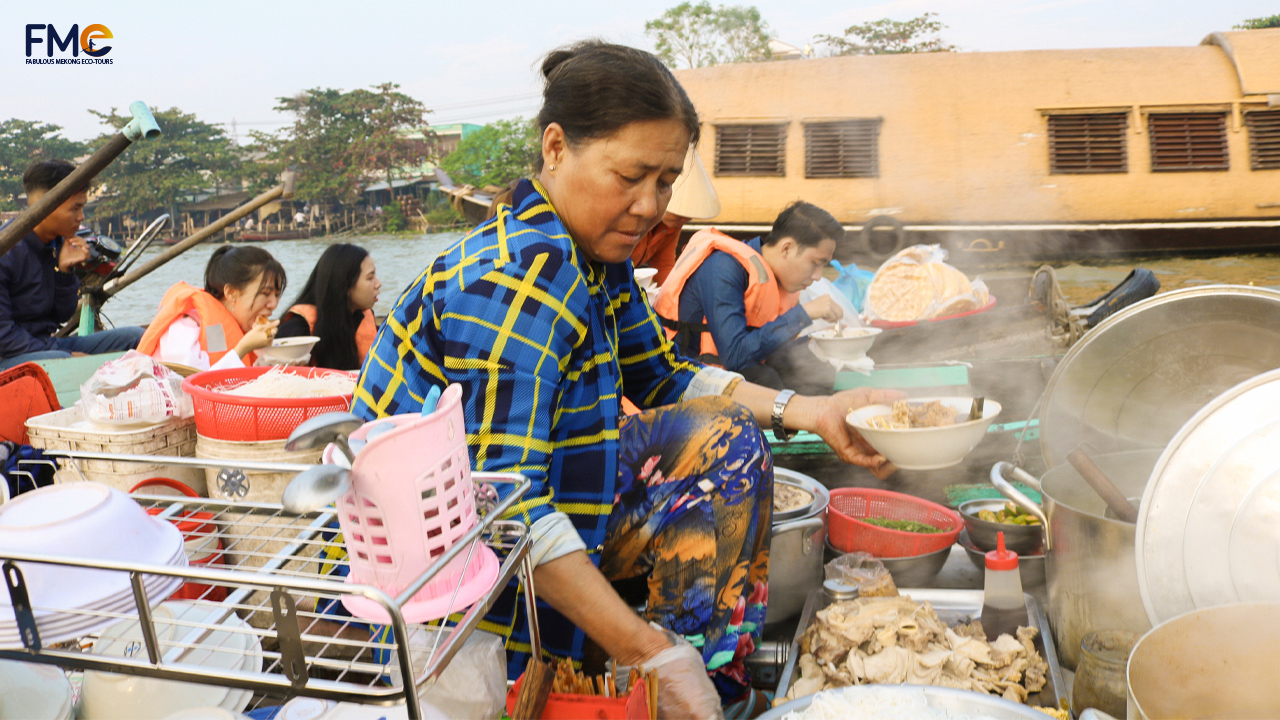
For early risers, a strong cup of Vietnamese coffee is the perfect pick-me-up. For those who prefer something lighter, fresh coconut water offers a refreshing alternative.
Even Gordon Ramsay praised the market’s hu tieu, calling its broth one of the best he’d ever tasted. It left such an impression that he featured it in his cooking show, MasterChef US.
The daily life of the locals
Life on the floating market is a blend of simplicity and resourcefulness. Boats double as homes, complete with flower pots, household items, and even motorcycles. Generations live together, sharing a tight-knit community spirit.
“What amazed me most was how self-sufficient these families are,” recalled Anna Ruiz, a traveler from Spain. “One boat had a garden of herbs growing in pots, and another had a makeshift swing for children. It was heartwarming to see how they adapt to life on the river.”
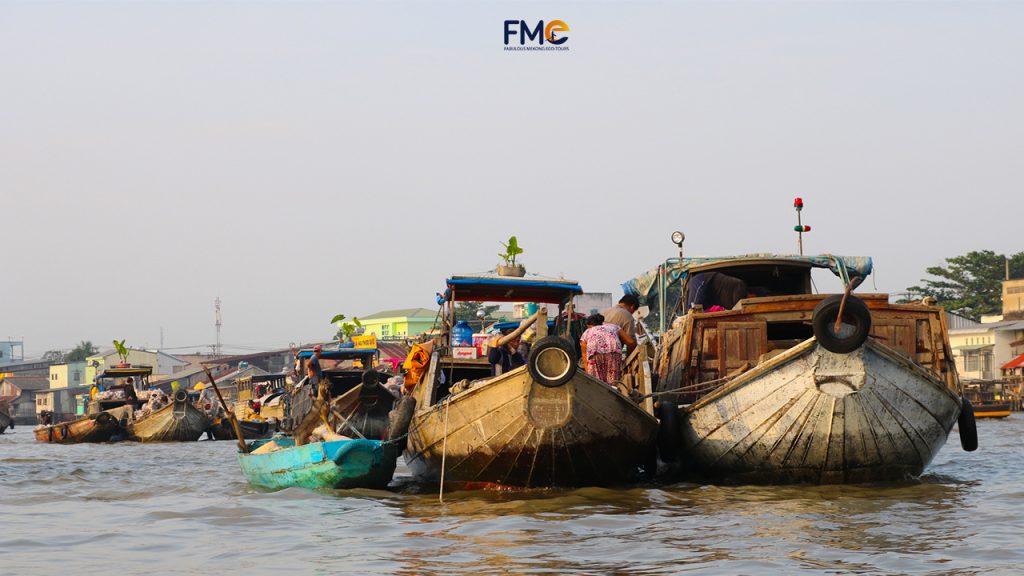
All daily activities—from cooking to laundry—take place on boats, making the floating market a unique ecosystem that thrives on resilience and innovation.
See the unique things about Cai Rang floating market
The market’s ingenuity shines through its cây bẹo—tall poles used to display goods for sale. This creative advertising method compensates for the lack of traditional signage.
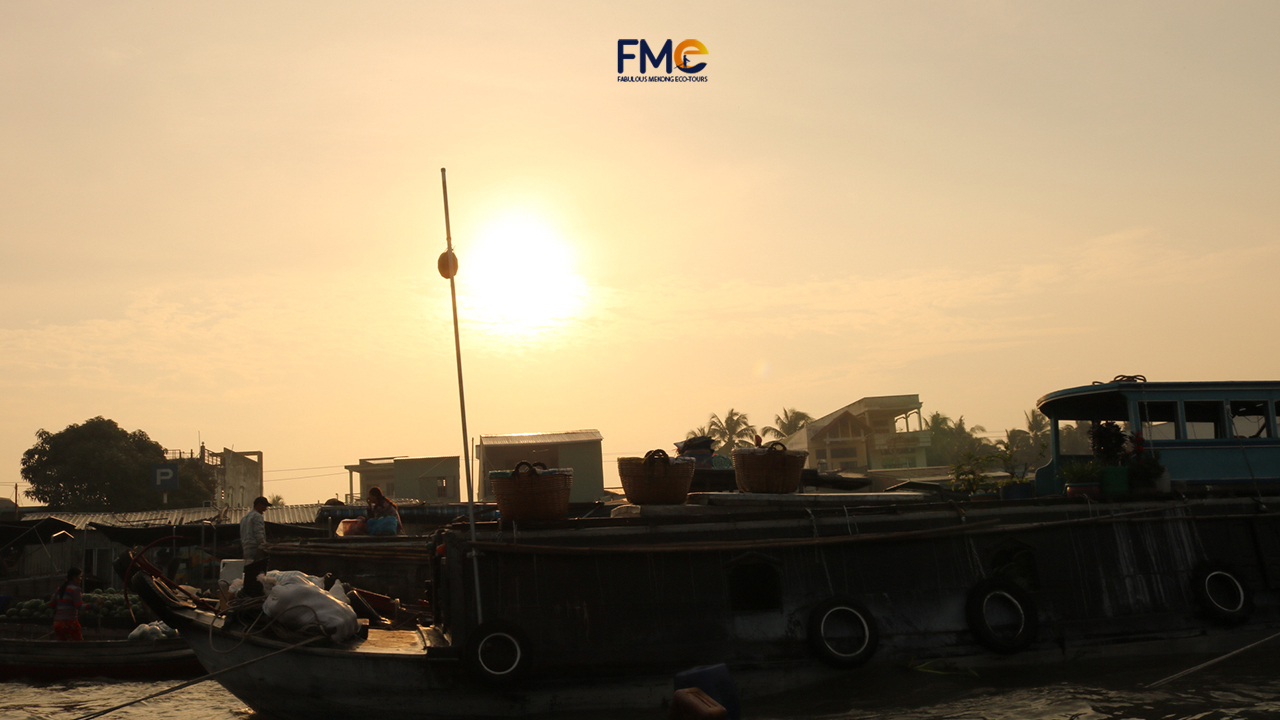
They prepare a tall pole, then hang the products they sell on that pole. People call it a “Bẹo”. The agricultural products that sellers would hang are sweet potatoes, cabbages, carrots, or pumpkins, etc. Moreover, there is one thing that forms the uniqueness of Viet Nam floating market. It is 4 “hanging”.
- Hanging something to sell: As explained above, sellers hang the agricultural products or goods they sell on the pole to invite buyers.
- Hanging without selling: It is the only pole hanging people’s clothes. Floating market life sometimes takes a few days living on boats. They eat and do the laundry on the boat. From there appeared the type of clothes hanging.
- Do not hang but sell: Those are just mobile shops such as cafes, which sell food or drink to people living on the boat. They use small boats to weave through hundreds of boats to offer service. They do not use the pole to invite but come to the place to sell to guests or people living here.
- Hanging one thing to sell another: For those who are about to “retire”. They can not hang a boat on a pole to sell. They decide to hang water coconut (nepal palm) leaves on top in order to let others understand that the boat owner wants to sell the boat. Hanging one thing to sell another implies that.
“I loved how each pole told its own story,” said David Green, a photographer from Australia. “The fruits hanging from the poles weren’t just products; they were like symbols of the market’s soul, showing what each vendor had to offer.”
Whether it’s the hanging of clothes, mobile cafes weaving through boats, or water coconut leaves signaling a boat for sale, these practices reflect the market’s one-of-a-kind charm.
Cai Rang floating market and other ones in the Mekong Delta
Floating markets in the Mekong Delta have been a way of life for over 100 years, shaped by the region’s extensive river system. These markets are a highlight of the Mekong Delta, but with so many to choose from, here’s a quick guide to the best ones:
- Cai Be Floating Market (Tien Giang Province): Convenient for those staying in Ho Chi Minh City with limited time, though it’s less bustling than others.
- Phong Dien Floating Market (Southwest of Can Tho): Opens at 4:30 am and features a small number of local merchants’ boats, offering an authentic experience.
- Long Xuyen Floating Market (An Giang Province): A quieter market that starts at 5:00 am, ideal for those near An Giang seeking a more local atmosphere.
- Tra On Floating Market (Vinh Long Province): Begins trading early, around 2:00–3:00 am, and is less known among tourists, offering a peaceful charm.
- Nga Nam Floating Market (Soc Trang Province): Opens at 3:00–4:00 am and is a good option for visitors near Soc Trang who want to explore a busy local market.
“It’s sad to see fewer boats now compared to ten years ago,” shared Minh, a boatman at Long Xuyen Floating Market. “Many families have moved to the land for better opportunities. But for me, the river is home. It’s where my parents traded, and it’s where I belong.”
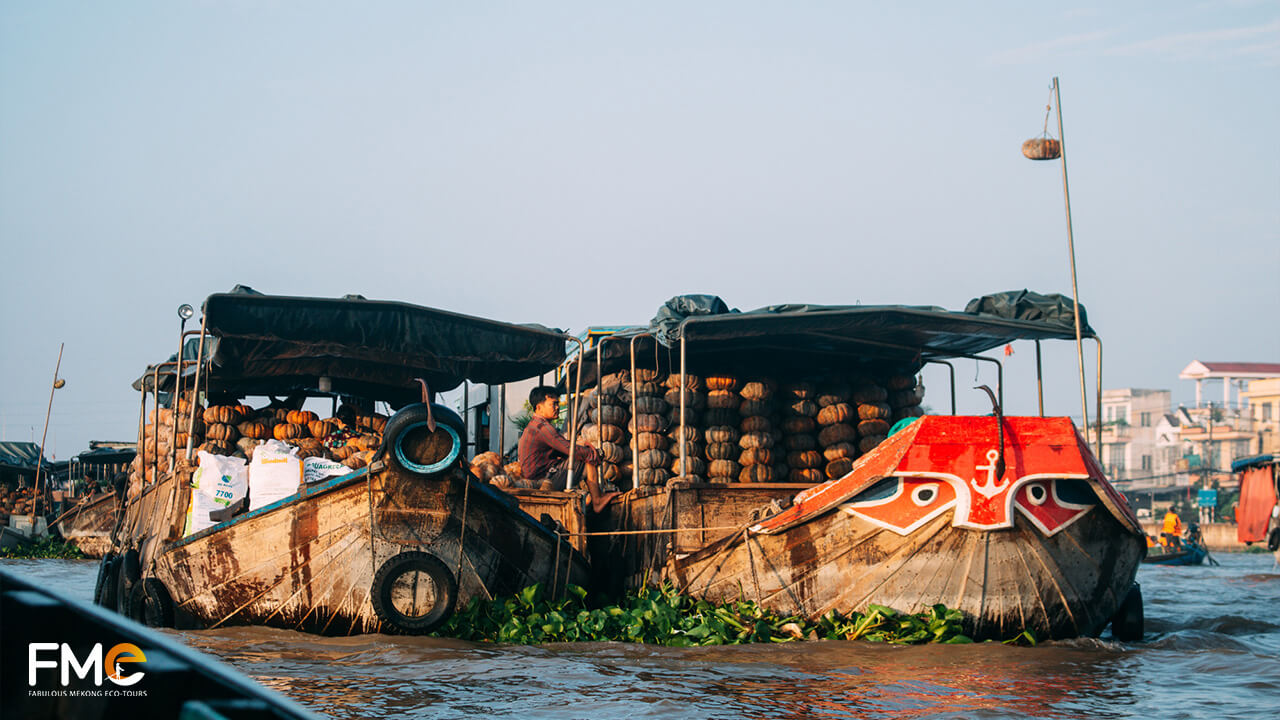
As modernization spreads across the Mekong Delta, floating markets face the challenge of declining numbers. Yet, for those who remain, these markets continue to represent not just commerce, but a way of life deeply tied to the water.
Overview of Cai Rang floating market
Cai Rang Floating Market (Chợ Nổi Cái Răng) is the largest floating market in the Mekong Delta and a must-visit destination for anyone exploring Southern Vietnam. Recognized as one of the 10 most impressive markets in the world by Rough Guide Travel Magazine, it’s a vibrant hub of culture, commerce, and daily life on the water.
Located on the Can Tho River, the market is:
- 30 minutes by boat from Ninh Kieu Wharf
- 6 km from Can Tho City Center
- 170 km southwest of Ho Chi Minh City
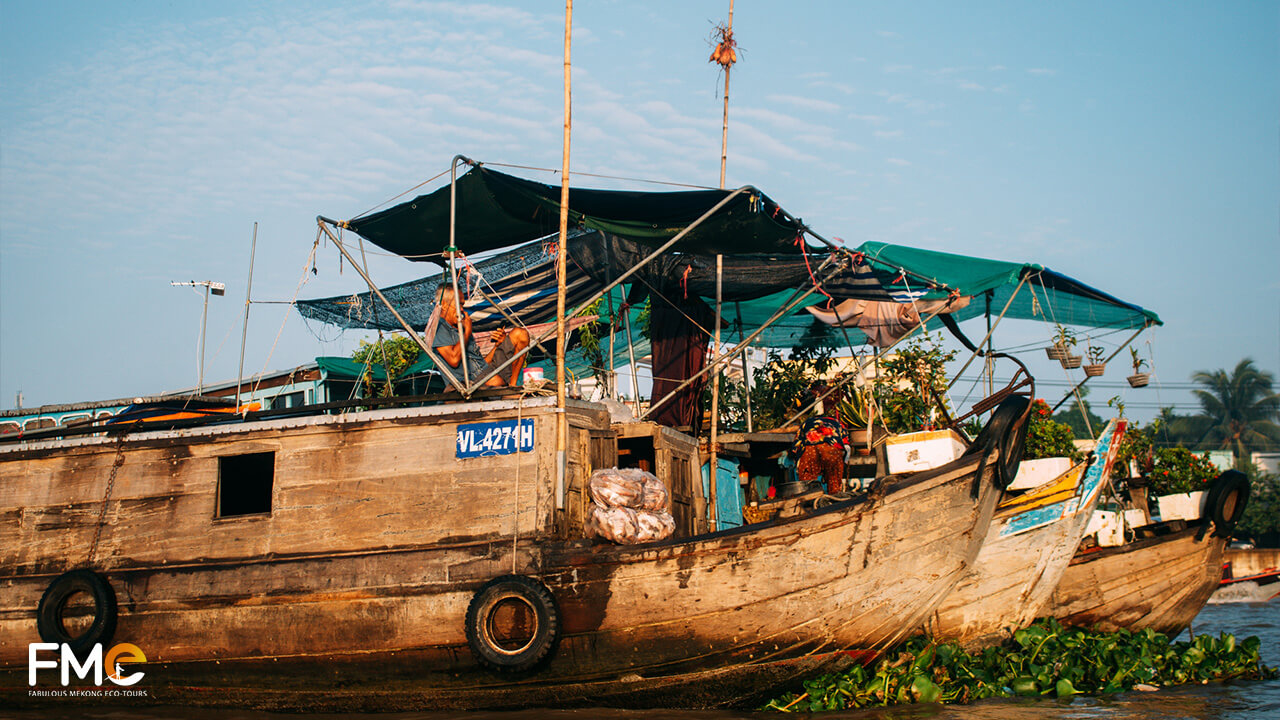
Cai Rang Floating Market has been an essential trading hub since the early 20th century, historically serving as a major rice market for Chinese merchants. In 2016, it was recognized as a National Intangible Cultural Heritage, highlighting its cultural significance in Vietnam.
Starting at 4 a.m. and peaking between 6 a.m. and 8 a.m., the market offers a bustling scene of boats laden with fresh produce, regional specialties, and traditional foods. Spending a night in Can Tho City and catching an early morning boat tour is the best way to immerse yourself in this authentic Mekong experience.
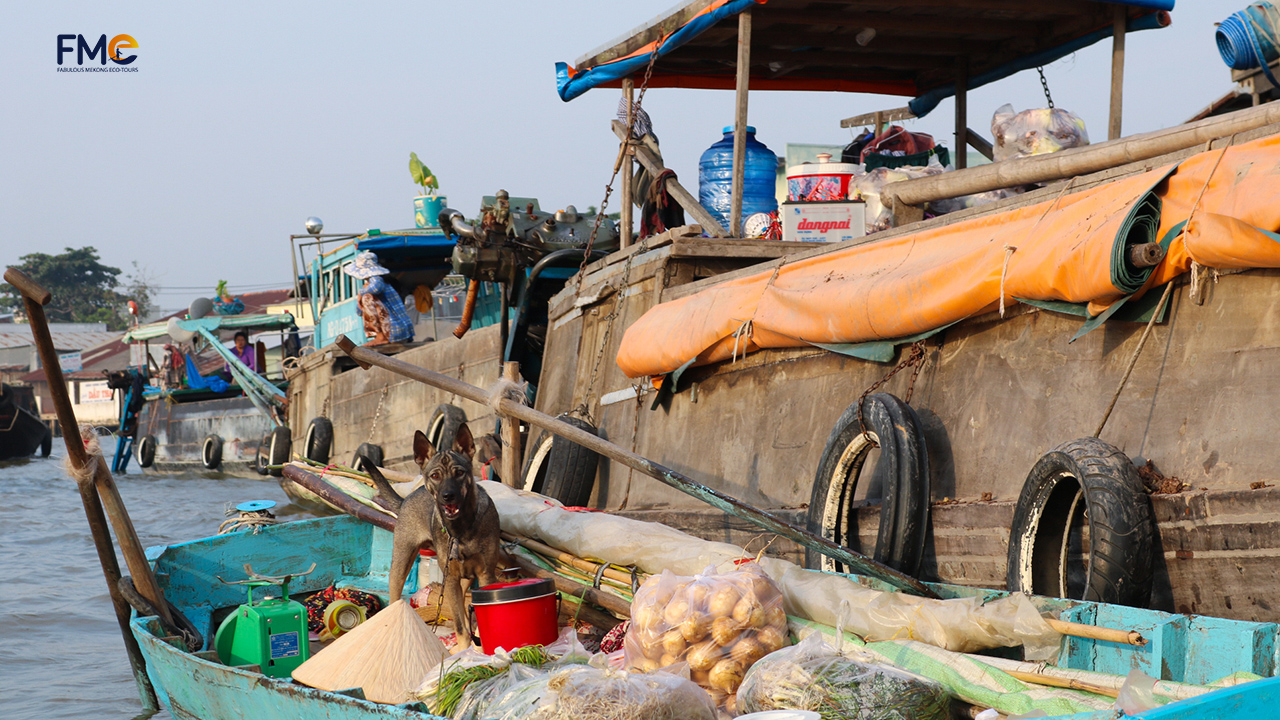
History of Cai Rang floating market
Cai Rang Floating Market is a cultural symbol of the Mekong Delta, with origins dating back hundreds of years. First recorded by the French in 1899, it reflects the region’s tradition of water-based trade and transportation.
Located at the confluence of the Cai Rang and Hau Rivers, the market benefits from its ideal location, ensuring easy docking and access for traders. It was historically known for selling agricultural products, with each boat specializing in one item. Today, the market has diversified to include household goods, food stalls, and daily necessities.
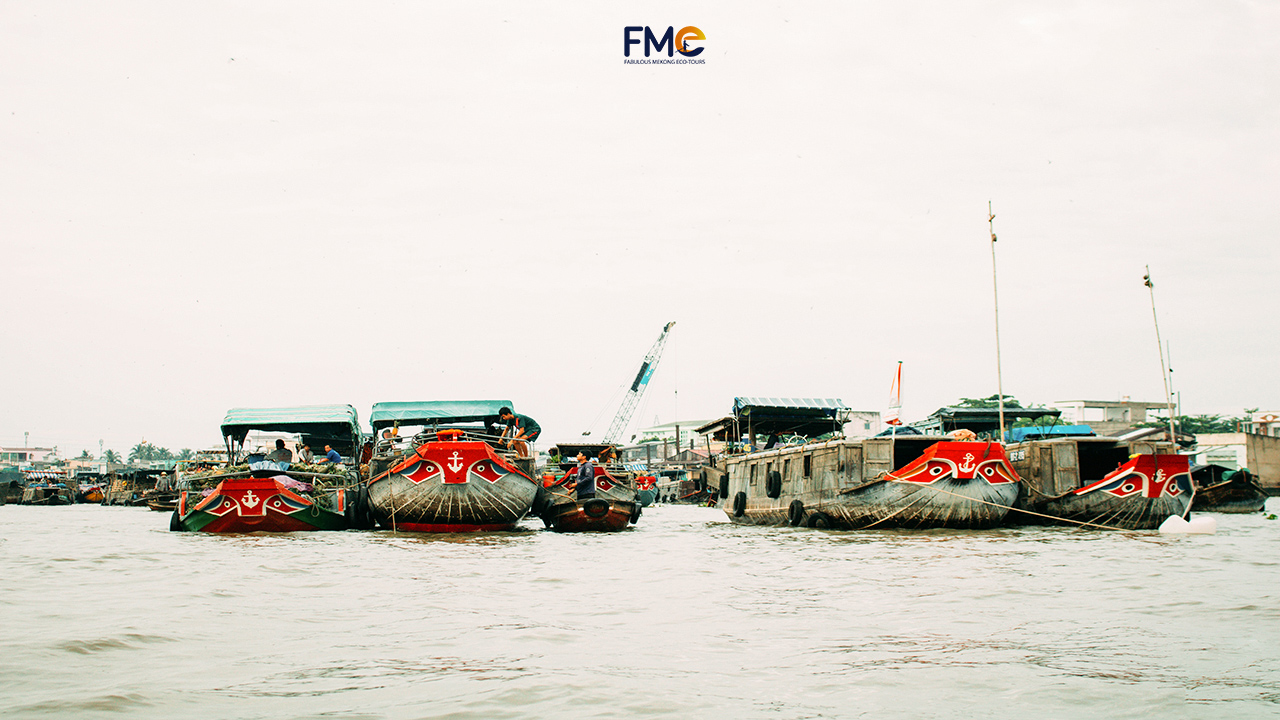
In the early 20th century, waterways were the main transport routes in the Mekong Delta due to the lack of developed roads. Boats and rafts were essential, connecting Can Tho with provinces like An Giang, Tra Vinh, and Soc Trang.
Despite modern infrastructure and improved road networks, Cai Rang remains a vital cultural and economic hub. Families continue to live on their boats, which double as homes and trading spaces. Generations coexist on these vessels, often alongside pets and small gardens, showcasing the ingenuity of river life.
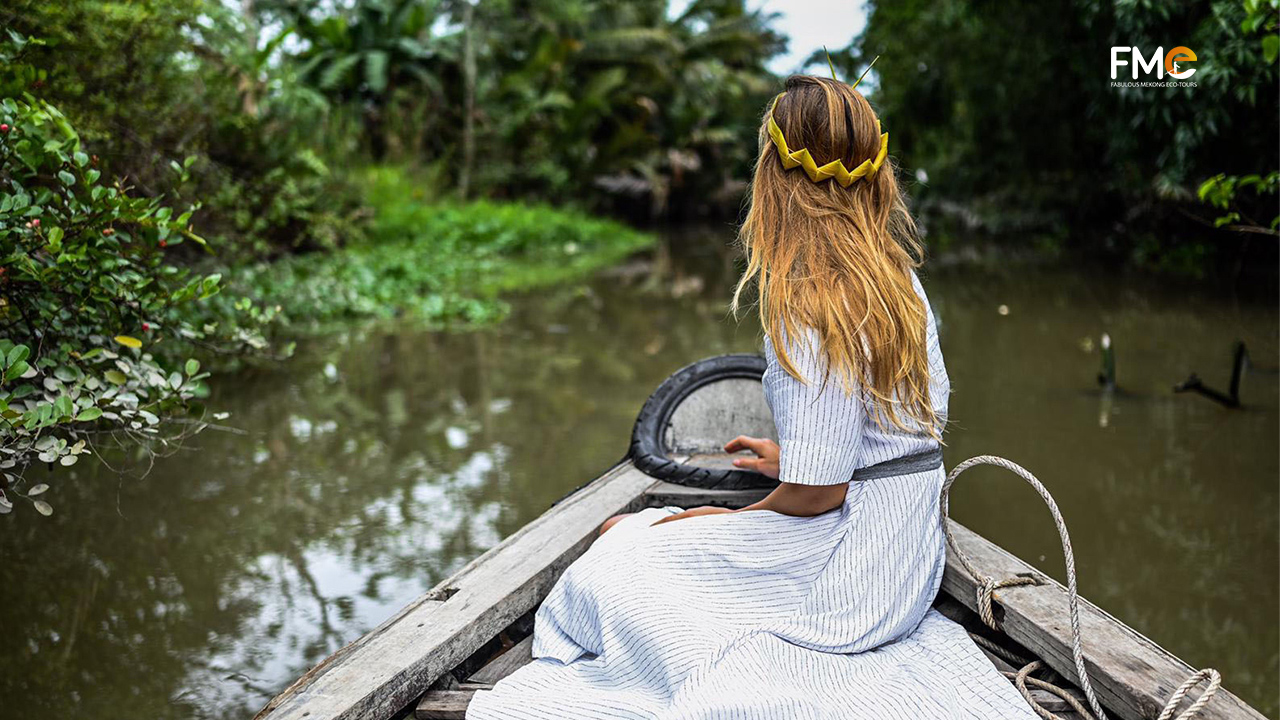
The market has evolved but retains its vibrant charm, making it a must-visit destination for those seeking an authentic glimpse of Mekong Delta culture.
The best time to visit Cai Rang floating market
Cai Rang Floating Market is a vibrant symbol of the Mekong Delta, showcasing the dynamic river life and trading culture that has thrived here for centuries. Visiting at the right time ensures you can fully experience the market’s charm, whether it’s savoring tropical fruits during the harvest season or soaking in the lively morning atmosphere.
When is the Best Season to Visit Cai Rang Floating Market?
You can visit the market year-round, but each season offers a unique experience:
- Dry season (December to April): This is the harvest season for tropical fruits. Boats overflow with fresh rambutans, durians, star apples, and other delights, making it a paradise for fruit lovers.
- Rainy season (May to November): The cool and refreshing atmosphere during this time adds to the market’s charm, making it a relaxing experience despite the occasional rain.
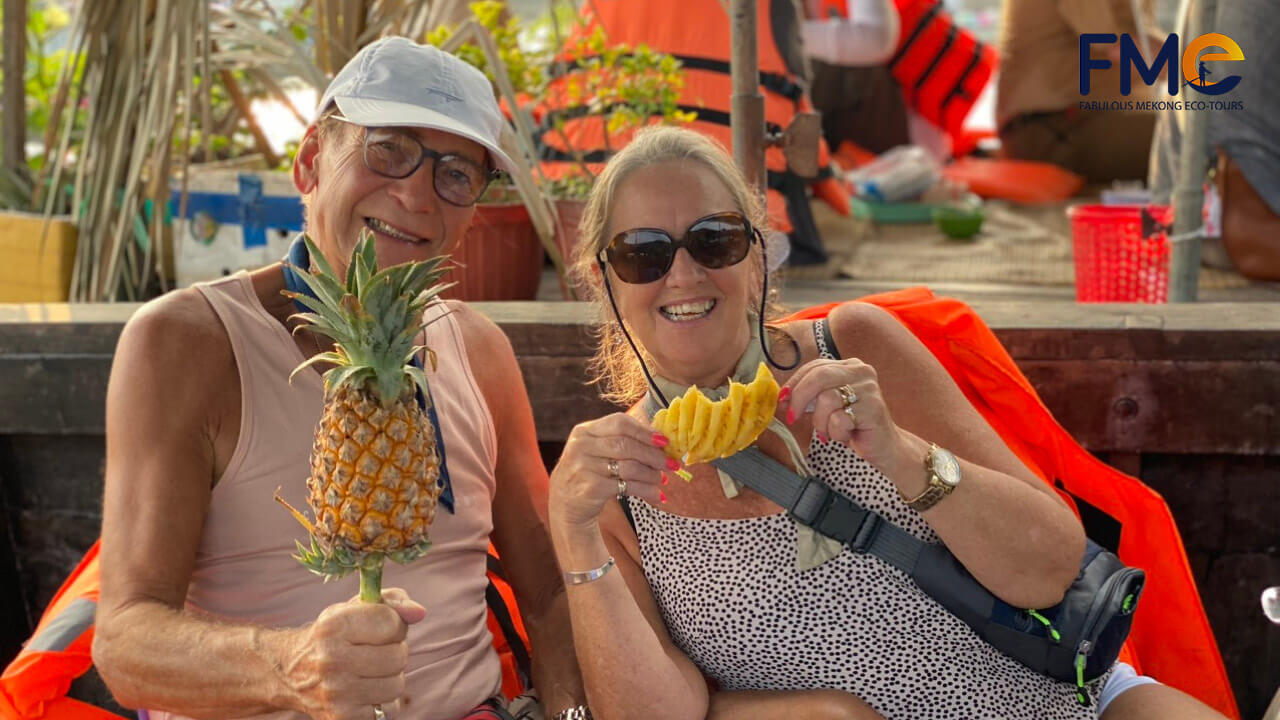
No matter the season, the market’s energy and cultural richness remain a highlight for all visitors.
What is the Best Time of Day to Visit Cai Rang Floating Market?
The ideal time to visit is in the early morning, from 4:00 to 9:30 a.m., when the market is at its busiest.
- 4:00–5:00 a.m.: Traders begin to gather, and you can witness the first light of dawn over the river—a serene yet lively start to the day.
- 6:00–8:00 a.m.: The market reaches its peak, with hundreds of boats forming a maze of vibrant activity. This is the perfect time to enjoy breakfast on a boat with local specialties like hu tieu or bun rieu.
“Arriving at sunrise was magical,” said Sarah Johnson, a traveler from Australia. “The colorful boats, the smell of fresh produce, and the buzz of trading—it’s an unforgettable experience.”
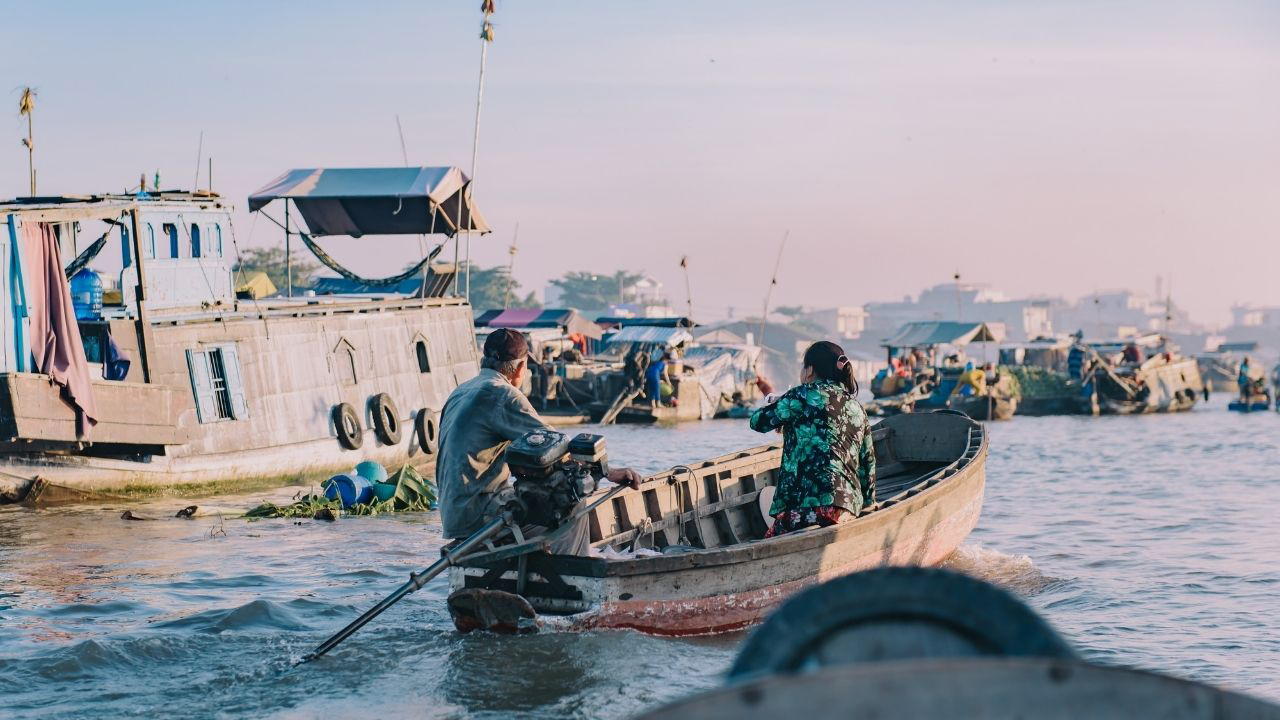
Originally operating as a wholesale market in the early hours, Cai Rang now caters to tourists with adjusted hours, ensuring visitors can enjoy its unique culture and breathtaking scenery at a more comfortable time.
Travel Guide and Tips
Visiting Cai Rang Floating Market is an exciting adventure, but proper preparation can make your trip even more enjoyable. From what to wear to the best ways to capture the market’s beauty, here are some essential tips to help you plan your visit.
What to wear and bring when you visit Cai Rang floating market?
Clothing: The Mekong Delta is warm and humid, so avoid thick or heavy clothing. Opt for light, breathable fabrics that absorb sweat, such as cotton or linen. Wearing bright colors like green, white, or blue not only keeps you cooler under the sun but also enhances your photos.
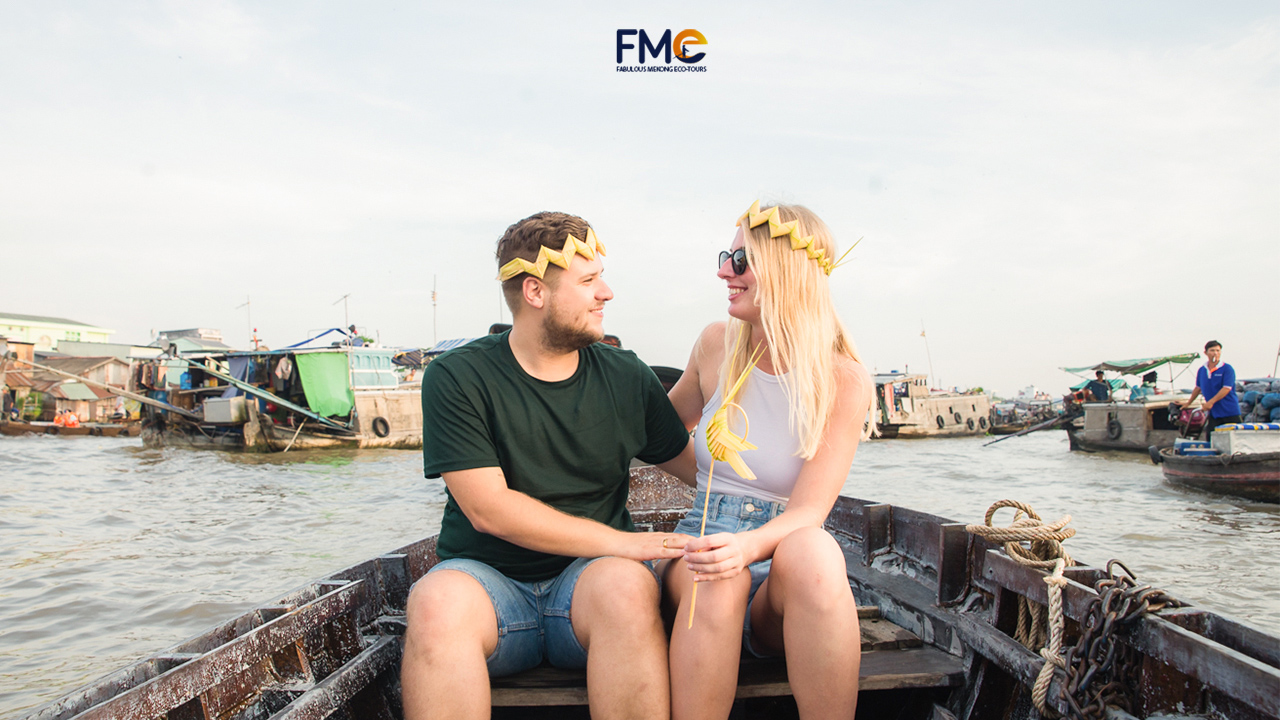
Essentials to Pack:
- Sunscreen: Protect your skin from the strong morning sun.
- Sunglasses: Shield your eyes and stay comfortable while sightseeing.
- Digital Gadgets: A camera or smartphone is a must to capture the vibrant scenes.
- Cash: Many vendors only accept cash, so bring small denominations to purchase fresh produce or enjoy local dishes.
- Hat or Cap: A wide-brimmed hat adds extra protection against the sun.
“The heat can catch you off guard,” said Emma Wilson, a traveler from the UK. “But with lightweight clothes and a hat, I stayed comfortable and enjoyed every moment.”
Can You Use a Flycam at the Market?
Yes, using a flycam is a fantastic way to capture the bustling energy of the Cai Rang Floating Market. From boats loaded with colorful produce to vendors exchanging goods, the aerial view reveals the market’s full vibrancy and charm.
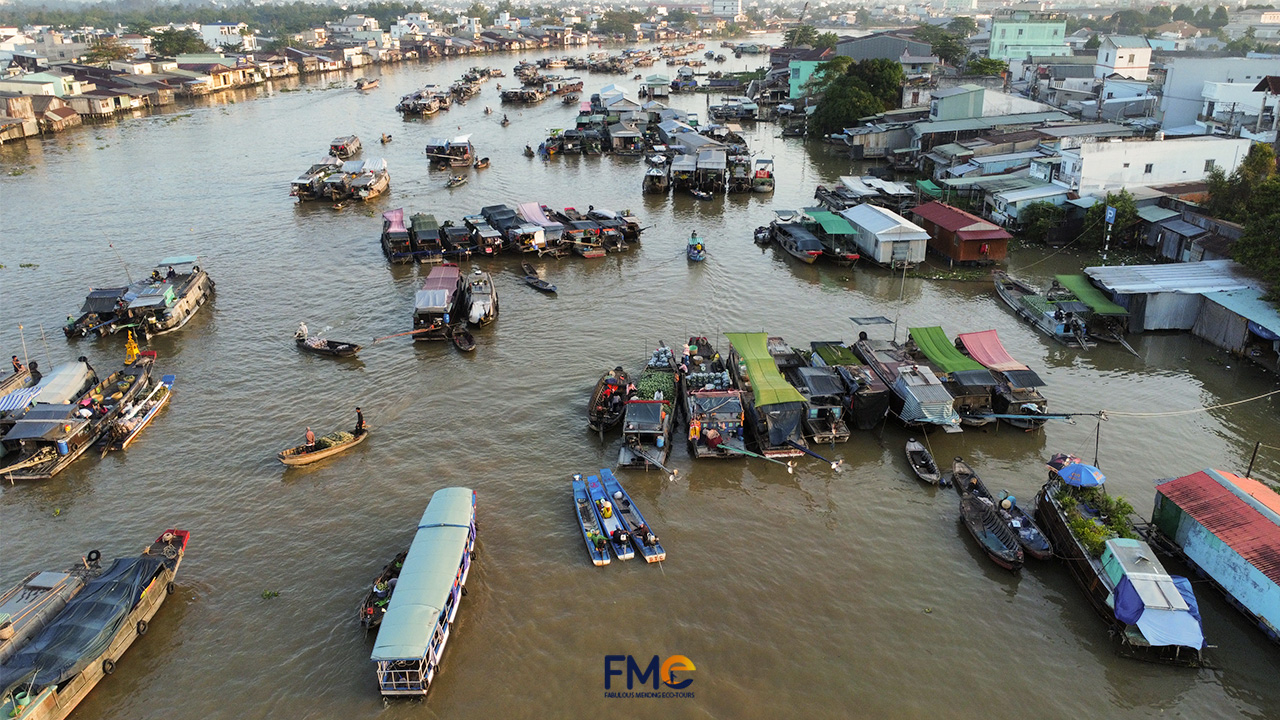
- Best Time for Flycam Shots: Early morning, between 6:00 and 8:00 a.m., is ideal for capturing the market at its liveliest. The golden light of sunrise adds a magical touch to your photos and videos.
- Tips for Using a Flycam:
- Ensure your flycam has a stable connection to avoid losing it in the busy market.
- Fly it at a safe height to avoid disturbing vendors or other visitors.
- Obtain necessary permissions if required, as local regulations may vary.
“The flycam shots of Cai Rang were the highlight of my trip,” said Michael Chen, a photographer from Singapore. “It’s incredible to see the maze of boats from above and the way life thrives on the river.”
Where to stay?
You can either stay in Can Tho city center, or opt for a homestay or guest house along the canals of the Mekong Delta.
Staying in the city center means that you can choose a more comfortable hotel, or easily get access to everything you need including simple things like ATMs, supermarkets and pharmacies, which are difficult to find if you decide to stay at homestays in the countryside.
However, as the homestays in Can Tho are mainly located around the canals of the Mekong Delta, they offer a rustic and unique experience that is hard to find in other regions.
Here is the best hotels, resorts and homestays list you can stay in Can Tho: Where to stay in Can Tho?
What travelers can buy at the Cai Rang floating market?
Cai Rang floating market is one of the largest gathering and trading places for sellers not only from Can Tho but also from neighboring provinces. Therefore, it can be said that this place is full of the regions’ specialties.
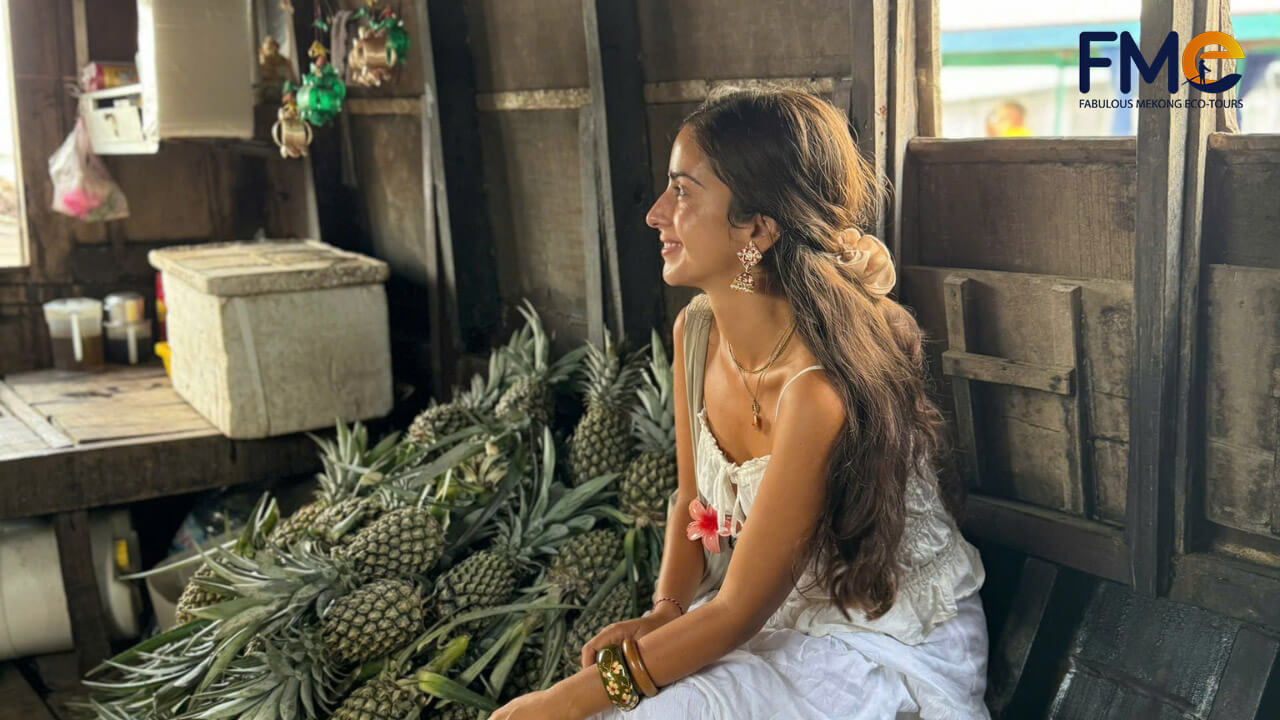
You will have a wide range of choices from fruits to agricultural products which you can taste and buy at the floating market. Let’s check out the time fruits are available!
- Rambutan: from June to August
- Durian: from the end of May to August
- Jackfruit: all year round
- Mangosteen: from May to July
- Burmese grape: from June to August
- Star apple: from December to February
- Mango: from April to May or from December to January
How to get a boat to Cai Rang floating market by yourself?
You have 2 options to get to the Cai Rang floating market.
1. At Ninh Kieu wharf
Distance and Experience: Starting from Ninh Kieu Wharf offers a longer but more scenic ride, taking about 30–45 minutes to reach the market. Along the way, you’ll get to enjoy the feeling of being on the water and possibly catch the breathtaking sunrise over the Mekong River.
Guide Interaction: Most boats departing from Ninh Kieu include a tour guide who will share interesting insights about the region, its culture, and the floating market itself.
Cost: The boat ride costs approximately 400,000–500,000 VND.
2. At An Binh market
Distance and Time: For those who prefer a shorter ride, starting from An Binh Market is more convenient. Located just 100 meters from the market, this option takes only 10–15 minutes by boat.
Efficiency: This is ideal for travelers who want to maximize their time exploring the market rather than traveling on the river.
Cost: The boat ride costs approximately 300,000 VND.
Looking for more information: How to get to Can Tho? Best way to travel to Can Tho.
Cai Rang floating market tour
If you want to explore the local life on the Mekong river, we recommend these following itineraries to visit Cai Rang Floating market combined with other highlighted destinations.
See all: the most attractive Cai Rang Floating Market tours.
Nearby tourist destinations
Traditional rice noodle factory
Come to the traditional noodle-making factory, you will have a chance to learn the process of making noodles which are famous all over the land of Can Tho. The workers here with their creativity also produce all kinds of noodles in many colors, each color is made from natural ingredients such as turmeric, beetroot, pandan leaves, dragon fruit,…
The creativity in the processing and blending of ingredients has really created a new dish that attracts both domestic and foreign tourists.
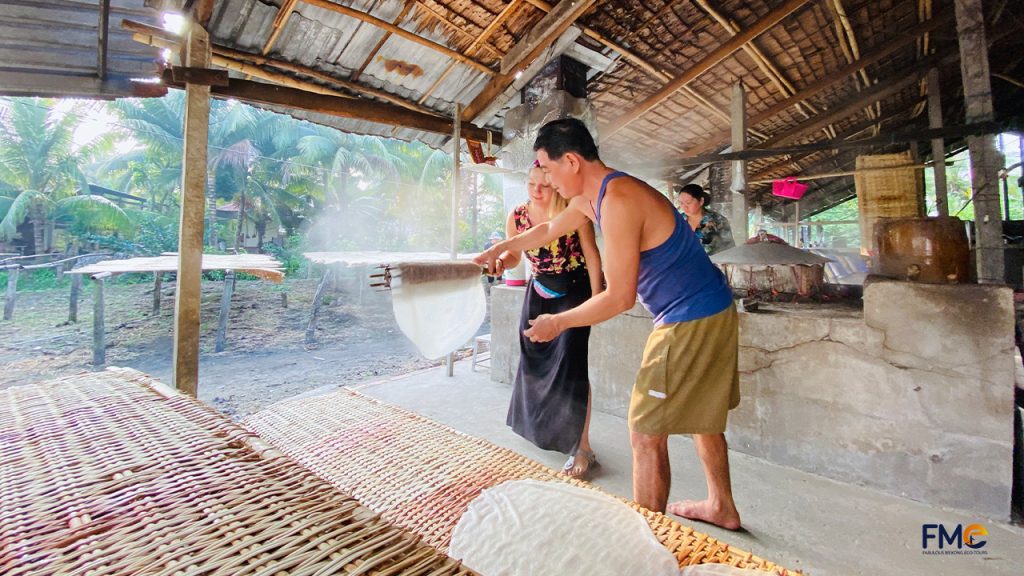
The rice noodle house is located on 474c/14a, area 7, An Binh Ward, Ninh Kieu District, Can Tho City, about 6,5km from Can Tho City center. The opening hour is from 6 am to 4 pm. This site does not charge any entrance fee.
Interested in learning more: 40 years traditional rice noodle factory in Can Tho.
Muoi Cuong cocoa farm
Muoi Cuong cocoa farm is located in Phong Dien district, Can Tho city. The ticket price to visit Muoi Cuong cocoa farm in Can Tho is 80,000 VND, including the fee to visit the farm, enjoy cocoa drink and learn about cocoa processing.
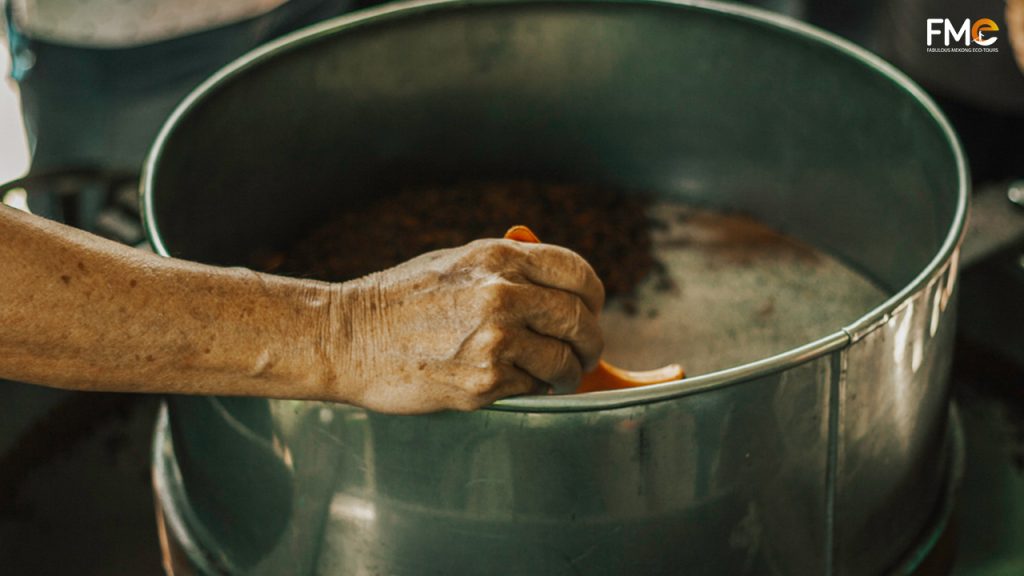
Surrounding the small path leading to the garden are two rows of green trees with fresh air. The farm has more than 2,000 cocoa trees. There are trees that have been planted for a long time, from 30 to 40 years.
Coming to Muoi Cuong cocoa farm, you not only have the opportunity to enjoy products made from cocoa beans but can also buy fresh cocoa if it is in season. In addition, you can also witness and learn about the preliminary and processing stages of cocoa, such as: incubation of cocoa beans, drying, grinding into powder, and processing of products.
Especially, enjoying wine Cocoa is something that you cannot ignore when coming to the place. This is an aperitif, created from fermented cocoa juice. If you have a chance to come here, don’t forget to buy some cocoa products such as cocoa wine, cocoa butter, cocoa powder, chocolate candies, etc.
Interested in learning more: Muoi Cuong Cocoa Farm in Can Tho.
My Khanh tourist village
Come to My Khanh Tourist Village, you can join various activities to explore and experience the countryside life such as: visiting the Southern traditional house, enjoying the traditional music performance “Don ca tai tu”, experiencing “One day being a Landlord” with a farmer’s meal, “One day being a farmer”, catching fish from ditches, visiting craft villages and orchards, etc.
Mekong delta is like a part of my life. I really enjoy living in this gorgeous region and want to bring it to the world. I usually tell myself: “my homeland dream, my dream” which means my FME team and I will try our best to contribute to building it better and better.
We hope that this information helps you plan your trip to visit the Cai Rang floating market with ease. Let’s explore the Cai Rang floating Market!
FAQ
What time does the Cai Rang floating market open?
Cai Rang floating market opens quite early in the morning, at about 5.30 am.
Where is Cai Rang?
Cai Rang is a district in Can Tho city, Viet Nam. This district shares the borders with Ninh Kieu district and Phong Dien district.
How much to rent a boat to Cai Rang floating market from Ninh Kieu Wharf?
– 550.000 VND (about $22) for a group of 1-6 passengers.
– 1.200.000 VND (about $50) for a group of 7-20 passengers.
– 60.000 VND (about $3) per person for a group of 21-40 passengers.
Where to rent a boat?
You can rent a boat at Ninh Kieu Wharf or at An Binh market (near Cai Rang Bridge).
Why was the Cai Rang floating market formed?
The market, which has thrived for over a century, is the commercial center in Can Tho City and its neighboring provinces, such as An Giang, Vinh Long, Dong Thap, Tra Vinh, and Soc Trang. It was formed in the early 20th century when roads and transportation had not been developed yet.
What kinds of products are sold at the Cai Rang floating market?
It is a wholesale market selling fruits and vegetables from Can Tho City as well as from neighboring provinces in Mekong Delta.
Should you visit Cai Rang floating market in Tet holiday?
No, Vendors at the floating market spend most of their time at here which means the market is open almost year round. However, it is closed during Tet (5-7 days) as at that time they will go back to their village or visit their relatives and families.
TRAVEL STORIES AND NEWS
Explore Mekong Stories
The Most Popular Tours offered by FME Travel
